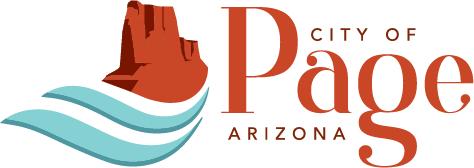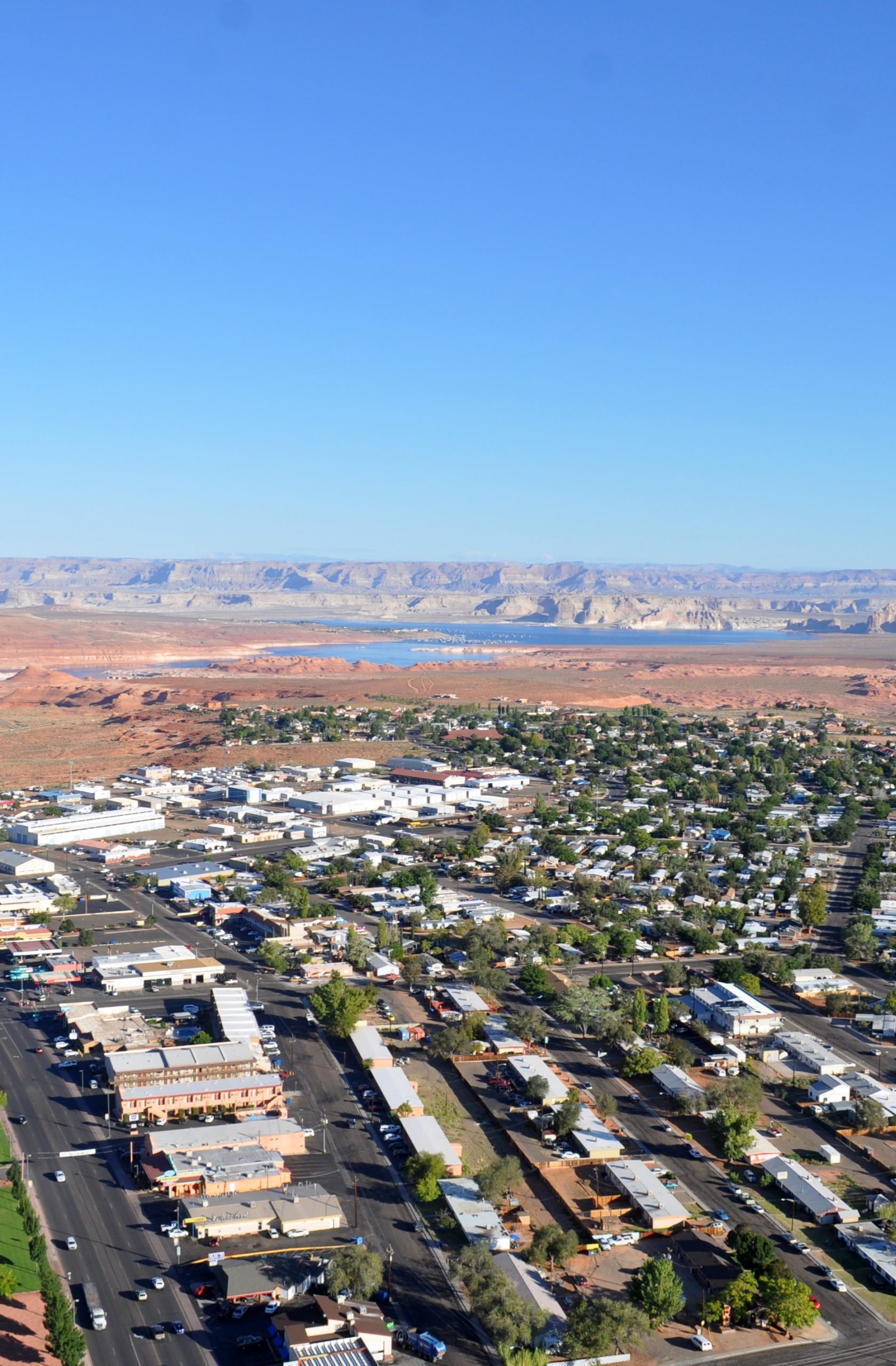Code Compliance
The Page City Code of Ordinances were put in place, in part, to promote the health, safety and welfare of the citizens of Page, and to protect the community as a whole from deterioration and decline by establishing minimum standards for the use and maintenance of all buildings and property. Compliance with the City Code is required by all citizens of Page.
Our goal is to resolve code violations quickly and efficiently through fair and reasonable collaboration with our citizens. The Code Compliance Division is here to provide education and resources to help correct existing violations and prevent future issues. Together we can make our city a better place to live.
- Fill out the Code Violation Complaint Form and submit it through our website or at City Hall
- E-mail us at code@pageaz.gov
- Call us at (928) 640-7404
The Code Compliance Division responds to complaints submitted by members of the public, City Council, the City Manager, or as discovered during the course of routine patrols, and works with citizens to resolve violation issues. We partner as necessary with the Police Department, Animal Control, and outside entities such as the Arizona Department of Health Services.
When a concern is reported, a staff member will review and investigate the case to confirm whether a violation exists. Unless the issue poses an imminent threat to the health, safety, or welfare of any citizen that requires immediate action, the Code Compliance Division will then notify the property owner or other responsible party of the violation, propose the solution, and work with the party to resolve the problem.
While it would be ideal if violations were corrected as soon as notification was given, we understand that each situation has different circumstances and strive to work together with our citizens to resolve issues within a fair and reasonable timeframe.
City of Page Code of Ordinances
For Our City
Common Code Violations
Ordinance: Title 9, Ch.91.05(D)(1)
§ 91.05 PUBLIC NUISANCE PROHIBITED. The following acts, omissions, conditions and things in or upon any land or structure in the city, or the failure to comply with any of the following standards constitute public nuisances, the existence of which are hereby prohibited and declared to be unlawful; the provisions of this section are not exclusive and may be duplicative of other provisions, codes and regulations adopted by the city; all provisions, codes and regulations of the city, including those in this section, may be applied cumulatively or separately for purposes of enforcement. (1976 Code, § 9-1-5) (Ord. 593-12, passed 8-8-2012; Ord. 628-16, passed 6-22-2016) Penalty, see § 10.99
(D) It shall be unlawful for any person to cause or allow the storage of any abandoned or junk vehicle, except where such storage is in complete compliance with this chapter and the City Zoning Code.
(1) In residential areas, all abandoned or junk vehicles being stored, restored or repaired shall be kept safely within a lawful building or structure or behind a lawful fence in such a manner as to not be visible from beyond the lot boundaries.
Applicable Definition(s):
ABANDONED OR JUNK VEHICLE. Any vehicle that is partially or wholly dismantled, discarded, wrecked, on blocks or similar devices, stripped or scrapped; or a vehicle with one or more deflated tires or from which a wheel or tire has been removed; or any motor vehicle which is inoperable due to mechanical failure or mechanical disassembly or other reasons, whether currently registered or not. The absence of current registration or license plate lawfully assigned and affixed thereto or immobilization for 60 days shall be prima facie evidence of inoperability.
Ordinance: Title 15, Ch.152.056(J)(3)(b)(1)
§ 152.056 OFF-STREET PARKING AND LOADING.
(J) Special parking requirements for residential uses.
(3) Location of residential parking spaces.
(b) The portion of a residential driveway or maneuvering area located within the front setback (or street side yard setback for corner lots) of lots zoned RE, R-1, R-2, MHS, and MHP may be used for parking of vehicles for occupants and guests, subject to the following requirements:
1. Parking of vehicles shall be done only on paved concrete, asphalt, pavers, or gravel areas. Lots located in the RE District shall be exempt from this requirement.
Applicable Definition(s):
SETBACK. The required minimum horizontal distance between the building line and the related front side, or rear property line.
Ordinance: Title 9, Ch.91.05(E). See also Title 5 Public Works: Chapter 50 Trash, Rubbish, and Recyclable and/or Hazardous Materials Collection.
§ 91.05 PUBLIC NUISANCE PROHIBITED. The following acts, omissions, conditions and things in or upon any land or structure in the city, or the failure to comply with any of the following standards constitute public nuisances, the existence of which are hereby prohibited and declared to be unlawful; the provisions of this section are not exclusive and may be duplicative of other provisions, codes and regulations adopted by the city; all provisions, codes and regulations of the city, including those in this section, may be applied cumulatively or separately for purposes of enforcement. (1976 Code, § 9-1-5) (Ord. 593-12, passed 8-8-2012; Ord. 628-16, passed 6-22-2016) Penalty, see § 10.99
(E) No person shall allow, deposit, store, accumulate or maintain garbage, trash, refuse, rubbish, litter or junk that is visible from beyond the lot boundaries, except for temporary storage of such materials in an authorized receptacle for collection in compliance with Chapter 50 of this code.
Applicable Definition(s):
GARBAGE. Household waste (including single- and multiple-family residences and some commercial enterprises such as hotels, offices, restaurants and other such businesses) that is permitted to be placed in on-site receptacles.
JUNK. Items that in their present state are of little or no apparent or objective economic value, except that which is confined within an industrial or commercial area in compliance with the City Zoning Code, including, but not limited to, discarded or scrapped furniture; glass, metal, paper, appliances, fixtures or machinery parts; inoperative machinery or appliances; vehicle bodies or parts, including tires; building material; litter; or discarded or empty containers.
LITTER. Any rubbish, refuse, waste materials, paper, glass, cans, bottles, organic or inorganic trash, debris, dead animals or any foreign substance of any kind or description, including abandoned or junk vehicles, regardless of their value.
REFUSE. All biodegradable or non-biodegradable solid or semisolid wastes, except human excreta, but including garbage, rubbish, ashes, trash, manure, dead animals, junk vehicles, construction materials and industrial wastes.
RUBBISH. All non-biodegradable solid wastes, excluding ashes, consisting of both combustible and noncombustible wastes, such as paper, cardboard, waste metal, tin cans, yard clippings, wood, glass, bedding, crockery, construction and similar materials.
TRASH. Paper, rags, old clothing, paper containers, pieces of wood, rubber or plastic, boxes, barrels or crates, construction materials, feathers, weeds, grass and tree limbs or shrub limbs.
Ordinance: Title 9, Ch.91.05(H)
§ 91.05 PUBLIC NUISANCE PROHIBITED. The following acts, omissions, conditions and things in or upon any land or structure in the city, or the failure to comply with any of the following standards constitute public nuisances, the existence of which are hereby prohibited and declared to be unlawful; the provisions of this section are not exclusive and may be duplicative of other provisions, codes and regulations adopted by the city; all provisions, codes and regulations of the city, including those in this section, may be applied cumulatively or separately for purposes of enforcement. (1976 Code, § 9-1-5) (Ord. 593-12, passed 8-8-2012; Ord. 628-16, passed 6-22-2016) Penalty, see § 10.99
(H) No owner or occupant of land, whether improved or unimproved, shall allow trees, shrubs or plant growth on that land to encroach upon or impede, obstruct or interfere with passage on, any street, sidewalk, easement or alley within the city or to obstruct visibility of any traffic control device or signal, or dead, decayed, diseased or hazardous trees, weeds, hedges, and overgrown or uncultivated vegetation which is in a hazardous condition or which is likely to harbor rats, vermin or other pests. This section does not apply to properly maintained compost bins.
Applicable Definition(s):
PLANT GROWTH. Vegetation, whether living or dead, such as grass, weeds, vines, bushes, cactus or trees.
WEEDS. Any vegetation which is, or is likely to be, detrimental, destructive or unsightly and difficult to control or eradicate, including, but not limited to, bull thistle, cocklebur, foxtail, horseweed, lambsquarters, London rocket, mallow, milkweed, pigweed, mustards, prickly lettuce, ragweed, Russian thistle, goat heads, tumble weeds, sheperdspurse, sow thistle, White Horse-nettle, willow-weed and those types of plant growth defined as noxious weeds by A.R.S. § 3-201 regardless of whether a particular property owner or occupant who is the subject of enforcement action under this code regards the growth as desirable.
Ordinances: Title 9, Ch.91.05(A-B). See also Title 15 Land Usage: Chapter 150 Buildings.
§ 91.05 PUBLIC NUISANCE PROHIBITED. The following acts, omissions, conditions and things in or upon any land or structure in the city, or the failure to comply with any of the following standards constitute public nuisances, the existence of which are hereby prohibited and declared to be unlawful; the provisions of this section are not exclusive and may be duplicative of other provisions, codes and regulations adopted by the city; all provisions, codes and regulations of the city, including those in this section, may be applied cumulatively or separately for purposes of enforcement. (1976 Code, § 9-1-5) (Ord. 593-12, passed 8-8-2012; Ord. 628-16, passed 6-22-2016) Penalty, see § 10.99
- It shall be unlawful to maintain any condition defined as or deemed to be a nuisance or hazard to the public health, safety or welfare by any statute of the state or any code or ordinance adopted by the city.
- Any attractive nuisance, dangerous to children and other persons including, but not limited to, abandoned, broken, or neglected household appliances, equipment and machinery, abandoned foundations or excavations, or improperly maintained or secured pool, hot tub or spa.
Applicable Definition(s):
HAZARD. A condition that presents a threat to life or public safety or that may cause physical harm in violation of Chapter 150 of this code of ordinances.
Ordinances: Title 15, Ch.152.046(C)(1); Title 15, Ch.152.046(C)(3); Title 15, Ch.152.046(F)(1)(c)
§ 152.046 ACCESSORY BUILDINGS, STRUCTURES AND USES.
(C) General development standards for accessory buildings, structures and uses.
(1) Unless otherwise expressly stated, accessory buildings, structures and uses are subject to the same lot and building regulations as apply to principal uses and buildings.
(3) Accessory buildings and structures, except for accessory dwelling units defined in § 152.046(F)(1), shall not be used for living or sleeping quarters.
(F) Additional standards for specific accessory buildings, structures and uses.
(1) Accessory dwelling unit.
(c) Mobile homes, manufactured housing, or recreational vehicles shall not be used as accessory dwelling units.
Applicable Definition(s):
RECREATIONAL VEHICLE. A vehicular unit, other than a mobile home, which is designed as a temporary dwelling for travel, recreational and vacation use, and which is either self-propelled, mounted on, or pulled by another vehicle. Examples include, but are not limited to, a travel trailer, camping trailer, truck camper, motor home, fifth-wheel trailer or van.
ACCESSORY DWELLING UNIT. A dwelling unit on the same lot with and of a nature normally incidental and secondary to the principal structure or use. This definition shall include any structure or portion of a structure, other than the principal structure or use, wherein kitchenette facilities and/or provisions for sanitation (shower, tub and/or water closet) are provided.
ACCESSORY STRUCTURE. A subordinate structure to that of a main building or structure, which is not served with utilities, enabling human habitation.
STORED. Parking, leaving, locating, keeping, maintaining, depositing, remaining or being physically present on private property.
OUTDOOR STORAGE. The keeping in an unroofed area, of any goods, junk, material, merchandise or vehicles in the same place for more than 24 hours.
Ordinances: Title 15, Ch.152.046(F)(14)(b)(1-5)
§ 152.046 ACCESSORY BUILDINGS, STRUCTURES AND USES.
(F) Additional standards for specific accessory buildings, structures and uses.
(14) Recreational vehicle parking and storage. The parking and/or storage of recreational vehicles, campers, travel trailers, motor homes, boats and personal recreational vehicles and trailers is permitted on any residential lot, subject to the following:
(b) Parking or storing in a required front yard or street side yard setback area shall be prohibited unless all of the following conditions exist:
1. The vehicle does not exceed a gross vehicle weight rating (GVWR) of 14,000 pounds;
2. The vehicle is parked on the designated driveway that provides direct access to the garage from the street or on an improved area having an asphalt, concrete, rock, gravel or other similar surface which is intended for the parking of vehicles;
3. The vehicle does not extend over a sidewalk or street;
4. The vehicle is fully operable and legally registered; and
5. No more than two such vehicles or trailers are parked or stored in the combined front or street side yard setback areas.
Applicable Definition(s):
RECREATIONAL VEHICLE. A vehicular unit, other than a mobile home, which is designed as a temporary dwelling for travel, recreational and vacation use, and which is either self-propelled, mounted on, or pulled by another vehicle. Examples include, but are not limited to, a travel trailer, camping trailer, truck camper, motor home, fifth-wheel trailer or van.
STORED. Parking, leaving, locating, keeping, maintaining, depositing, remaining or being physically present on private property.
OUTDOOR STORAGE. The keeping in an unroofed area, of any goods, junk, material, merchandise or vehicles in the same place for more than 24 hours.
Ordinance: Title 9, Ch.91.05(O)
§ 91.05 PUBLIC NUISANCE PROHIBITED. The following acts, omissions, conditions and things in or upon any land or structure in the city, or the failure to comply with any of the following standards constitute public nuisances, the existence of which are hereby prohibited and declared to be unlawful; the provisions of this section are not exclusive and may be duplicative of other provisions, codes and regulations adopted by the city; all provisions, codes and regulations of the city, including those in this section, may be applied cumulatively or separately for purposes of enforcement. (1976 Code, § 9-1-5) (Ord. 593-12, passed 8-8-2012; Ord. 628-16, passed 6-22-2016) Penalty, see § 10.99
(O) It is unlawful for any owner or occupant of land to fail to properly repair or replace any collapsed or fallen fence adjacent to the public right-of-way.
Ordinance: Title 15, Ch.152.057(C)(2)(a, d)
§ 152.057 LANDSCAPE, WALLS, AND SCREENING.
(C) Fences, walls and screening. Standards set forth in this section protect the visual quality of the public realm by establishing screening requirements for various land use and development conditions.
(2) General fence and wall regulations.
(a) All general perimeter and on-site fences and walls shall adhere to the city adopted building codes and be constructed of long-lasting materials, such as vinyl, wood, masonry, stone, decorative metal, and be architecturally integrated with the building design. Within the RE, Commercial, Industrial and Airport Zoning Districts, chain link fences may be allowed with the approval of the Community Development Department.
(d) Barbed wire fences shall be prohibited in all zoning districts except in the SC and IP District and for temporary construction sites, provided that the barbed wire is located six feet or more above grade. Temporary barbed wire fencing located on construction sites shall be removed from the site at the time of final inspection, or a certificate of occupancy will not be issued.
Ordinance: Title 15, Ch.152.057(C)(3)(a-b)
§ 152.057 LANDSCAPE, WALLS, AND SCREENING.
(C) Fences, walls and screening. Standards set forth in this section protect the visual quality of the public realm by establishing screening requirements for various land use and development conditions.
(3) General wall and fence height standards.
(a) Fences or walls located between the front yard building setback line and the front property line of a lot may not exceed four feet in height.
(b) In areas behind a required front yard building setback and within the required rear and side yards, including walls for single family dwellings, the maximum height of walls shall be six feet, as measured from the finish grade, except where a taller wall is necessary for screening purposes. Where two lots abut one another, but have differing finish grades, the wall height shall be limited to six feet on the high side and eight feet on the low side. Modifications of these requirements shall require written request and approval of the Community Development Department.
Applicable Definition(s):
SETBACK. The required minimum horizontal distance between the building line and the related front side, or rear property line.


